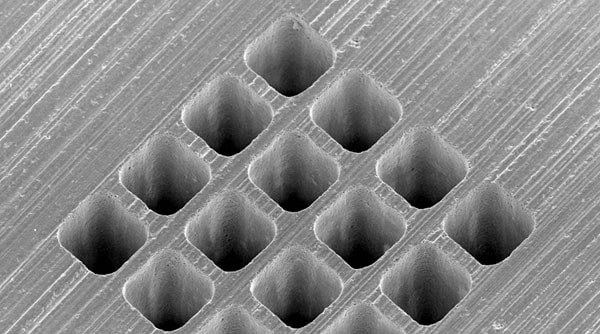Nowadays, micromachining is an important industry. Since even small changes of the tiniest workpieces do have a great effect, a high-quality micro machining is crucial. Through various processes, small workpieces can be processed and customized.
Thanks to micro erosion, the smallest holes can be made as well as very tiny parts can be manufactured. This is mainly done with workpieces made of ceramics, carbide, hardened steels, steel, alloy steels, stainless steels (e. g. INOX), and non-ferrous metals. Even diminutive holes with diameters of 0.13 mm and micro gears for (wrist)watches or injection molds for the production of plastic parts are feasible. As for the clamping of the micro parts special devices are required, the development and use of self-produced clamping devices become necessary. The accuracy of a part to be manufactured is directly dependent on the accuracy of the clamping device. In fine wire EDM, tolerances of +/-0.001 mm and surface finishes of Ra 0.01 / N2 can be achieved. By means of start hole shooting, smallest holes with a radius of 0.06 mm can be produced as well. Thanks to precision laser cutting, smallest contours and parts with material thicknesses of 0.02 – 1.5mm are feasible. With precision laser cutting, many materials such as titanium, stainless steels, alloyed and unalloyed steels or non-ferrous metals such as copper, brass, and bronze as well as various types of plastics can be processed.
Application possibilities in micromachining are very diverse. Sectors like electrical industry, watch industry, injection mold making, and ophthalmic industry (eye surgery instruments) and many other use this procedure.
Need gears for a drive mechanism or injection-molded plastic gears? Here you are. Especially in the medicine sector, micromachining becomes more and more important, as the required instruments have to be as small as possible (keyhole surgery) for minimizing surgery-related injuries to tissue or musculature.

